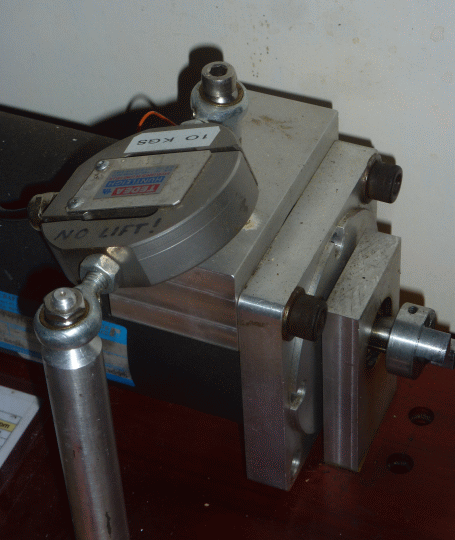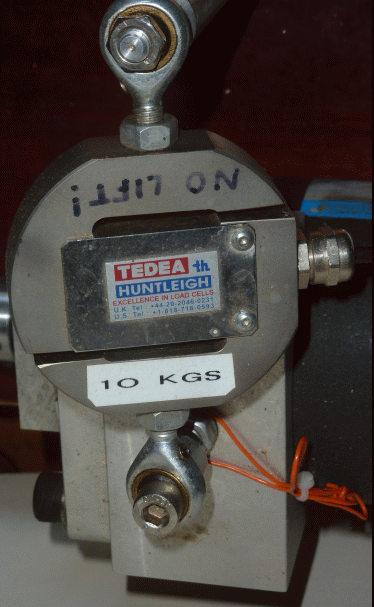Page 30 – The Strain Gauge Setup
Strain Gauges measure force
electrically. But what
you buy is called a load cell.
This is a
strain gauge and an amplifier together.
The strain
gauge needs to be mounted between a post and a clamp on the
generator.
A
multimeter can then be used
to measure the output voltage form the amplifier
Prior
to installation on the generator, the output voltage needs to be
calibrated with known weights – use metric weights. This
will results in a scale factor – such as 1v = 0.85
newtons.
A newton is about the weight of an apple –
about 100 grams weight
For accuracy, calibrate the load cell
for the force (weight) of 1 Kg = 9.81 Newtons.
When
installed between the post and the generator, the distance between
the fixing point
of the strain gauge and the axis of the
generator must be measured.
Use
meters. These are the SI units. Torque is measured in Newton
meters (Nm).
To
get the wattage (Power = Torque x Rotational Speed), the engineering
unit of revolutions
per minute (RPM) must be converted to the
SI unit of Radians per second
A
radian is about 60 degrees.
To convert from a tacho RPM
value to get to radians per second multiply by 0.105
Each
radian per second is about 10 RPM.
When
I am carrying out a measurement run I record the load cell volts
on my multimeter
and the RPM from my bicycle speedometer
meter (Cyclists call RPM “cadence”)
I
key Volts and RPM to a spreadsheet and use column maths to convert
to Nm and Rads/sec.
Then
I chart Torque vs Rotational Speed (Nm vs Rads/sec) and calculate
peak power.

 Here are some useful links (2020)
SparkFun OpenScale
coolcomponents.co.uk
And
learn.sparkfun.com/tutorials
And an example project:
learn.sparkfun.com/tutorials/qwiic-scale-hookup-guide
Here are some useful links (2020)
SparkFun OpenScale
coolcomponents.co.uk
And
learn.sparkfun.com/tutorials
And an example project:
learn.sparkfun.com/tutorials/qwiic-scale-hookup-guide